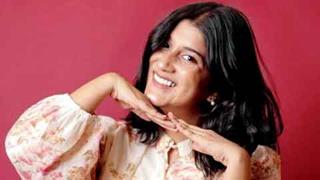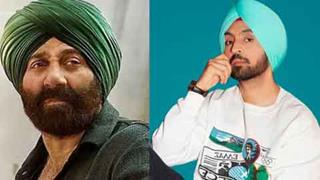Savita Singh, Sharmistha Roy, Amala Papuri and Fawzia Fatima -- these names may not ring a bell, but they are
the new women technicians who have made a mark in Bollywood and carved a niche in the otherwise male-
dominated industry.
The Hindi film industry is beginning to see a number of female executive producers, first assistant directors,
cinematographers and even sound engineers who have been learning the ropes of filmmaking and film trade.
Of them, the gritty one who has come to limelight is Savita, who worked as director of photography in Ram Gopal
Varma's recent release "Phoonk". Pooja Sharma is another cinematographer who has opted for a career behind the
screen.
Amala has chosen the most "un-ladylike" profession of audiography and so has Fawzia.
While Meenal Agrawal has chosen production design, Hetal Dedhia has selected the lighting department to be their
chosen fields.
"Yes, we have crashed into the male bastion. But we have done so to prove ourselves and not to compete with
anyone else, " said Meenal, who worked on movies like "Bheja Fry" and "Mixed Doubles".
The entry of these women into the industry was a well-planned move on their part. They had talents to prove and it
was acknowledged.
According to Mumbai-based sociologist Maya Mehta, liberalisation of the Indian economy and its consequences
contributed in a way towards liberalising the mindset of womenfolk in India.
"Liberalisation of the economy threw open many opportunities and women who had the inclination and talent picked
them up. Corporatisation of Bollywood provided a reassurance to the professional woman to enter this new
organised sector with faith, " Mehta said.
The force that drove them to the industry, Mehta pointed out, was the change of thoughtprocess on the part of
women who were ready to get out of the cocoon.
Of course, women had been in a dominant position in Bollywood earlier as well. In the 1930s, through the 1940s
and 1950s, ladies like Ruby Meyers (Sulochana), Devika Rani and Mary Ann Evans (Fearless Nadia) had held a
commanding position in the industry when women in general were forced to play second fiddle to men in India.
But until as recently as the 1980s, women never dared to encroach upon the technical domain of Bollywood as it
was considered exclusive male territory.
When in the early 1980s, a lanky and slender girl called Kamla Deviah was seen strutting around the sets of
producer Pranlal Mehta's "Hum Se Badhkar Kaun" and giving orders to the unit hands with assurance and authority,
she made a sight never before seen on the sets of any Hindi movie.
Yes, Kamla was one of Bollywood's first female professionals to do the job of a production controller, a job that
required the skill of men management.
But Kamla disappeared from the scene all too soon, after working for movies like "Dharam Aur Kanoon" (1984) and
"Love 86" (1986). After she left, the only woman professional to be working on Hindi movies was choreographer
Saroj Khan (Nirmala Sadhu Khan).
A disciple of dance master B. Sohanlal, Saroj Khan rose to fame with Shekhar Kapur's "Mr. India" (1987) and never
looked back. She is as active today as she was in the past.
"Bollywood is one place where more than the gender, it is one's talent that counts. I never felt any resistance when
I turned independent choreographer with 'Nagina' in 1986 even though the profession was then dominated by men, "
Saroj told.
In a true sense, the influx of women professionals into Bollywood started only in the 1990s, even though
professionals like director Sai Paranjape and costume designer Bhanu Athaiya had already been impacting the
industry.
"When lyricist-fimmaker Gulzar's daughter, Meghna Gulzar, instead of opting for an acting career, chose direction
as her profession, all she intended to do was to prove herself, " said veteran journalist Ali Peter John.
"Similarly, " Ali added, "yesteryear star Jeetendra's daughter, Ekta Kapoor, could have made her debut in movies
straightway had she wished. If she chose television instead, it was because she wanted to prove her talent in a new
territory on her own steam."
Ali's own daughter, Swati, is also into film direction and has not followed in her father's secure footsteps.
When Renu Saluja, a graduate from the Film and Television Institute of India (FTII), Pune, turned professional film
editor in the late 1980s, she raised many eyebrows as the profession was then teeming with male editors in
moviedom.
"But by successfully editing a film like Govind Nihalani's 'Ardh Satya', she proved skeptics wrong. My brother
Saeed and director Vidhu Vinod Chopra, who had encouraged her in the beginning of her career, were more than
delighted that a girl could do a man's job as successfully, " said filmmaker Aziz Mirza.
What does Mirza think of the influx of woman technicians into the film industry?
"I have no reasons to complain as each one of them is doing a great job in their respective professions. They are
sincere and dedicated, the reasons why they succeed faster than their male counterparts, " he said.
When Sharmistha Roy opted to be an art director, she, of course, chose her father, Sudhendu Roy's profession.
But, if over time, she has become a regular with Yash Raj Films, Mukta Arts and Dharma Productions, it is not
because of her father's connections with these respectable Bollywood banners, but due to her thorough knowledge
of the trade.
In the field of direction, there were a number of women who tried their hand, but couldn't make it big. Farah Khan,
who shifted profession from choreography to direction with aplomb, was the first to make her presence felt with the
blockbuster "Main Hoon Na". And Reema Kagti followed suit with "Honeymoon Travels".
"It was a conscious decision when I made my career transition and, having done that, I worked hard not to be a
failure and risk the grins and sneers of the industry. My hard work has paid off, " Farah said.
She, however, refused to admit that her star connections made the job easier for her.
"Of course, my industry connections helped, but at the end of the day, it is my work that is seen on the screen, "
Farah said.
Women break into another male bastion in Bollywood
Monday, December 15, 2008 10:47 IST


















